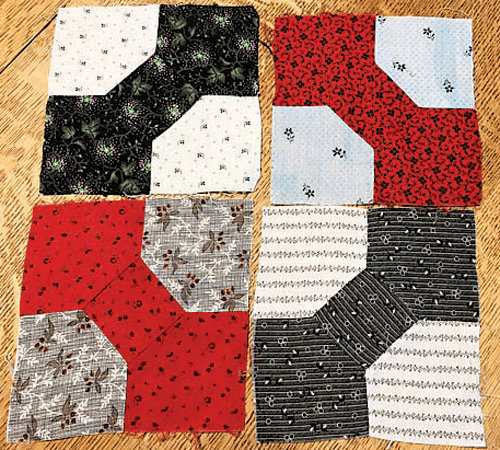MOURNING, GARIBALDI’S AND NEON PRINTS: HOW FAD! – Around The Frame

Looking at the photo, I knew her blocks are much older than the 1950s. In fact, they are all century-old blocks! At the Quilter’s Hall of Fame Celebration, I went to a lecture by Xenia Cord on fad fabrics. Xenia is an independent scholar and past president of the American Quilt Study Group. She taught Folklore and American Studies at Indiana University for twenty-one years before turning her attention to the promotion of quilts and quilt makers. She owns Legacy Quilts an antique quilts brokerage. I’ve met up with Xenia over the years and we both traveled in a group to France to study their vintage textiles and quilts in 2005.
Xenia’s lecture included the background of red and black Garibaldi prints named after Giuseppe Garibaldi (1807-1882) who is considered one of the greatest generals of modern times. He personally commanded and fought in many military campaigns that led eventually to the Italian unification. Garibaldi was very popular in Italy and abroad, aided by exceptional international media coverage at the time. The men who served under him wore blousy red shirts forgoing a military uniform. Fabrics were made with either a red or black background with a design in the opposite color.
Back in 1861 when Prince Albert died, England’s Queen Victoria went into deep mourning and wore black as part of the mourning ritual. People could rent mourning attire, stores offered mourning attire in crepe and silk but not cotton. Men mourning a deceased spouse had a much shorter mourning period where women it was years and as she went through the stages, she could eventually move to half-mourning black/white prints to gray. Not everyone wore half-mourning prints out of grief: rural women favored their practicality for the daily dirty work of farm life.
Black prints or neon prints are brightly colored prints that developed around 1895 a few years after sulfur black dye was discovered and were popular to about 1920. You can read more about them on Barbara Brackman’s blog at bit.ly/2wNtuW9. I have a quilt made entirely of “neons” and when I showed it to Barbara at one of her workshops, she told me it was the best example of a neon quilt she had ever seen. Needless to say, I deeply cherish it.
I did write the seller of the blocks to let her know what a “fad:” treasure her trove of blocks represented, and to date, she hasn’t contacted me. I plan to send the article link so she knows her family’s quilt block history goes back a lot further than 1950.
Lois Levihn is the owner of Born Again Quilts, 4005 South Wayne Avenue. She can be reached at bornagainquilts.com or 260-515-9446.
- Sewing For A Higher Purpose ~ Around The Frame - April 12, 2024
- National Quilting Day 2024 ~ Around The Frame - March 1, 2024
- Reunited! ~ Around The Frame - February 2, 2024


